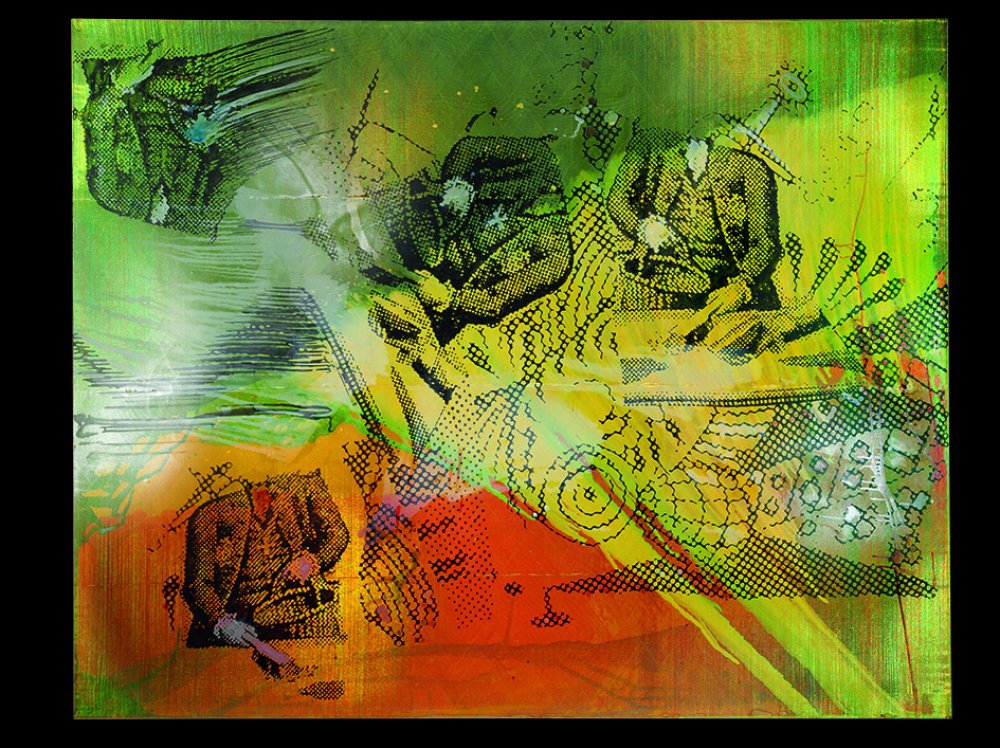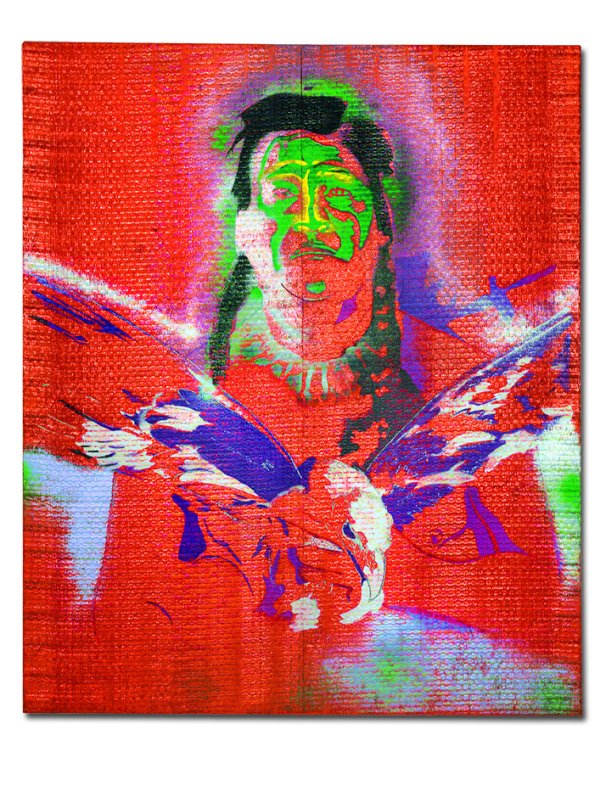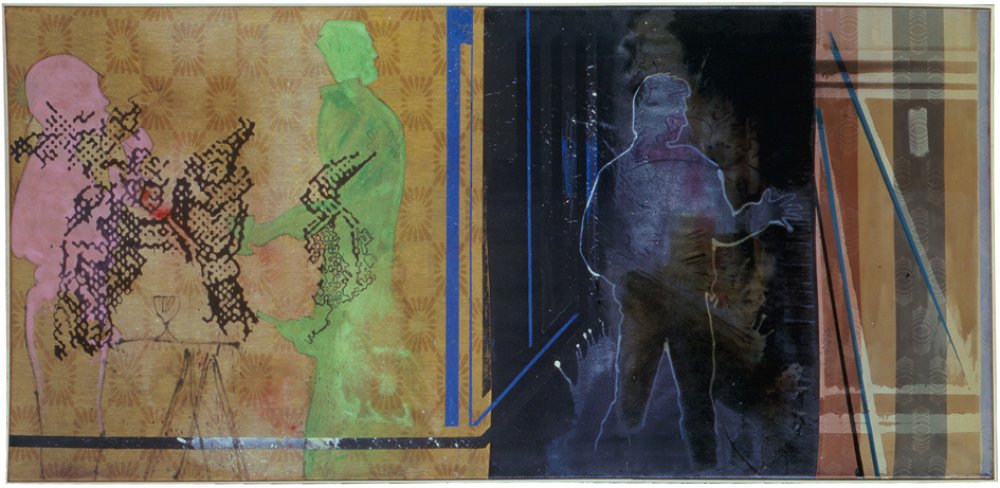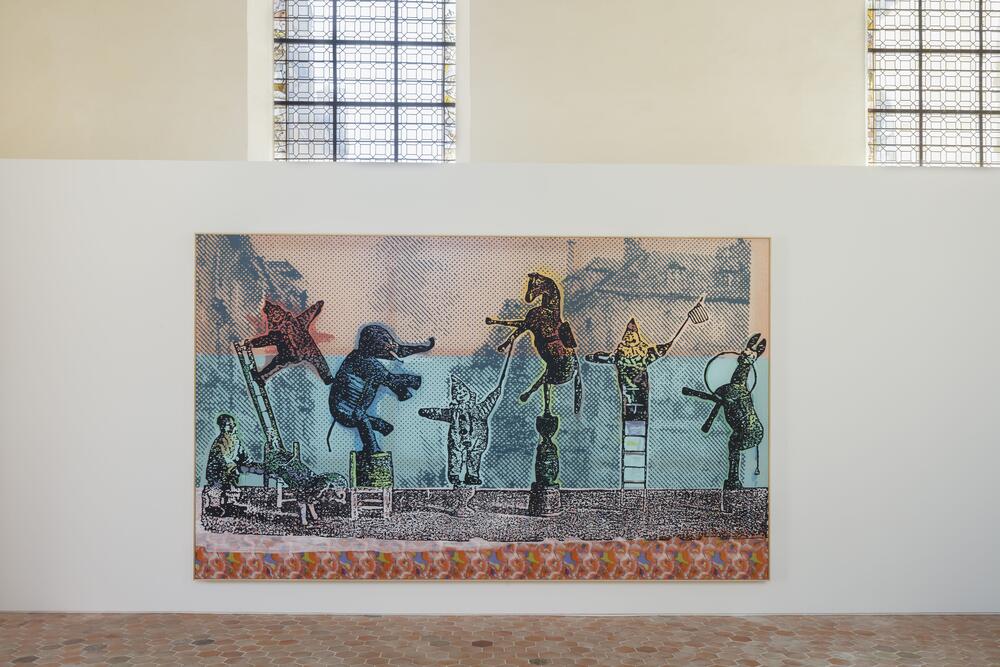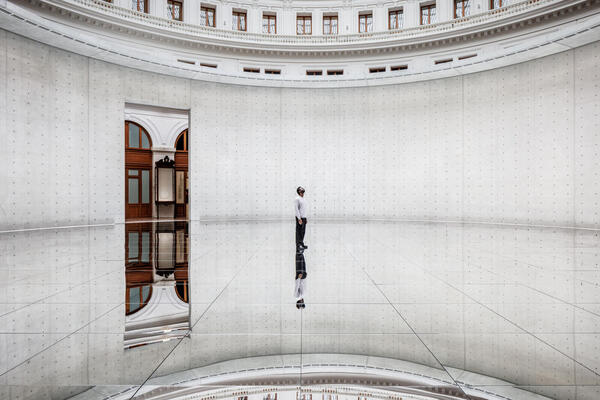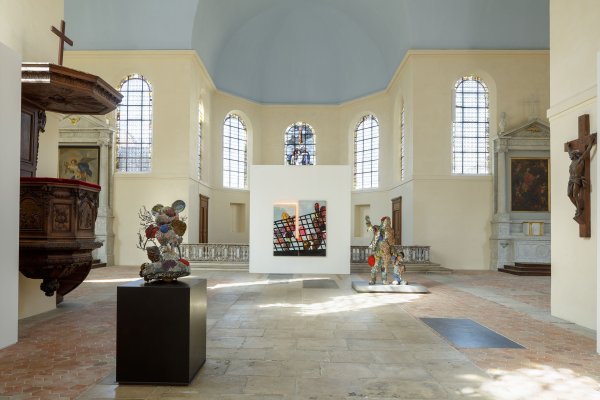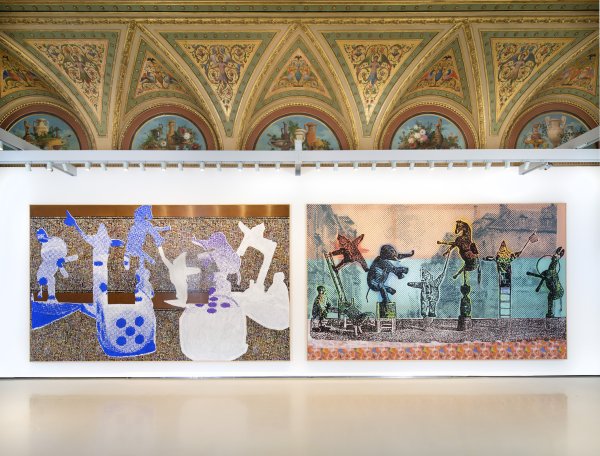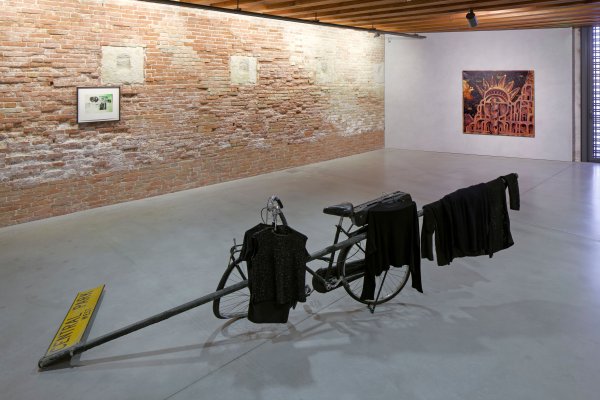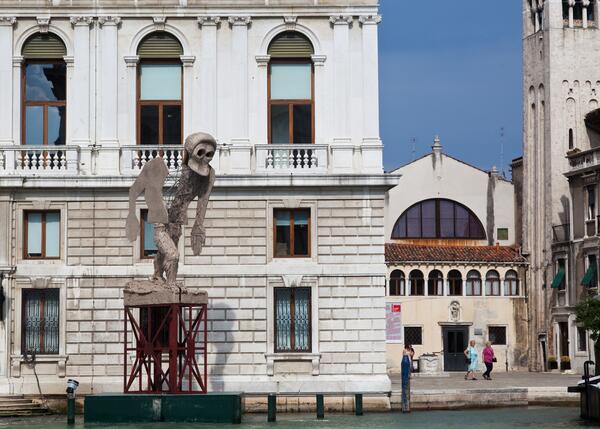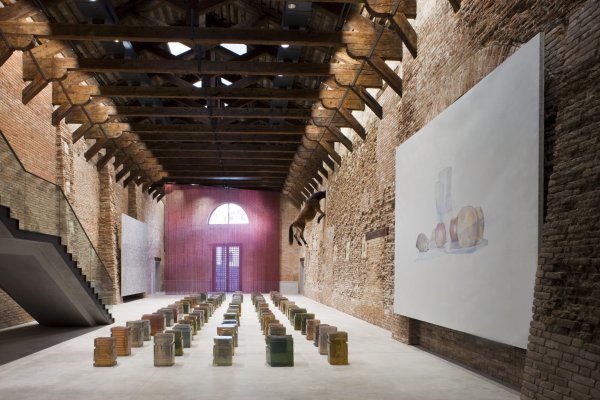Sigmar
Polke
Polke
German, 1941 — 2010
Criticism, weft and colour are words that could mark out the course and approach of Sigmar Polke. Very much present through his paintings and sculptures in the Pinault Collection, the German artist has produced an unclassifiable body of work, combining the delight of matter, the strength of the concept and the power of emotion.
In the 1960s, Sigmar Polke established “capitalist realism” with Gerhard Richter and Konrad Lueg. Within this movement, with its ironic echoes of “socialist realism”, and responding to American Pop Art, he works on objects symbolising the German economic miracle. He went on to make raster paintings (“Rasterbilder”), based on recovered images, enlarged and painted point by point. In the 1980s, his work was characterised by experimentation with pigments. Polke, as a modern-day alchemist, uses forgotten colours like lapis-lazuli and creates daring combinations of materials.
Sigmar Polke’s work was shown for the first time during the 2009 exhibition "Mapping the Studio". In 2016, he was granted a retrospective at the Palazzo Grassi.
